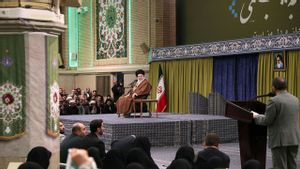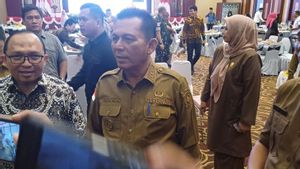YOGYAKARTA Prayers between 2 prostrations are a prayer that is offered when a Muslim is in a sitting position after performing one prostration and before continuing to prostrate next in prayer, both fardhu prayers and sunnah prayers.
In prayer, sitting between 2 prostrations is included in the commotion of tumakninah, namely being silent briefly as a separator between one prayer movement and another movement.
The motion to sit between 2 proper prostrations is as exemplified by the Prophet SAW, namely unfurling his left foot, then sitting on the sole of his left foot, and enforcing his right foot sole and facing his right foot to the Qibla.
The way to sit between these 2 prostrations is based on the explanation of Sheikh Abu Bakar Muhammad Syatha in his book entitled Hasyiyah I'anah at-Thalibin.
The explanation is as follows:
Let's talk about it. Let's talk about it, let's believe in it. Let's believe in it.
Meaning: Punded sitting iftirasy, namely sitting on the left ankle after leaning on the left leg if the upper left leg sticks to the floor and enforces the right foot and places the tips of the right leg on the floor by turning it on the Qibla direction.
Reading the prayer between 2 prostrations, namely:
You can't help it, you can't help it, you can't help it, you can't help it, you can't help it, you can't help it, you can't help it, you can't help it, you can't help it, you can't help it, you can't help it, you can't.
Arab-latin:menghfirlii warhamnii wajburnii warfa'ni warzuqnii Wahdinii wa aafini wa fu anni.
Meaning: 'O Allah forgive me, forgive me, forgive me, correct my condition, raise my degrees, give me sustenance and instructions for me.'
In addition to the above prayer, there is another version of prayer between 2 prostrations. In a hadith narrated by Imam Tirmidzi, the Prophet Muhammad said:
You can't help yourself, you can't help yourself, you can't help yourself, you can't help yourself, you can't help yourself, you can't help yourself, you can't help yourself, you can't help yourself, you can't help yourself, you can't help yourself, you can't help yourself, you can't help yourself, you can't help yourself, you can't help yourself, you can't help yourself, you can't help yourself, you can't help yourself, you can't.
Meaning: 'Usually Rasulullah Shallallahu' Alihi Wasalllam when sitting between two prostrations he reads: Allahummagfirli warhamnii, wajburnii, Wahdini, warzuqnii (meaning: O Allah forgive me, forgive me, forgive me, just give me, give me a guide, and give me sustenance).
SEE ALSO:
As additional information, the hadith above is Abdullah bin Abbas radhiallahu anhu. This hadith was tarnished by Al Albani in Shahih At Tirmidzi.
In the book Fiqih Islam wa Adilutahu Volume 2 by Prof. Dr. Wahbah az-Zuhaili, the reading of the prayer between the 2 prostrations includes prayers of forgiveness, prayers for rejecting reinforcements, and sustenance prayers. The sustenance in question includes the sustenance of the zhahir for the body and inner sustenance for the soul.
That's the information about prayers between 2 prostrations. Hopefully this article can add insight to the loyal readers of VOI.ID.
The English, Chinese, Japanese, Arabic, and French versions are automatically generated by the AI. So there may still be inaccuracies in translating, please always see Indonesian as our main language. (system supported by DigitalSiber.id)












